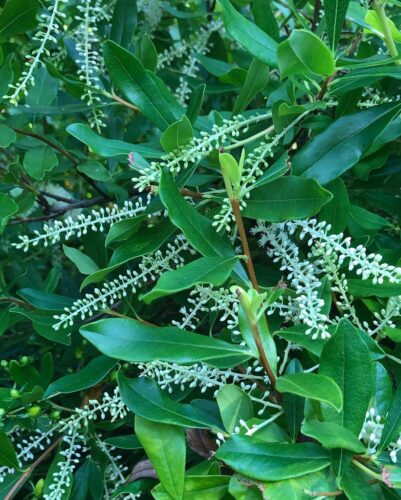Swamp Titi or Summer Titi: Is it Harmful for Bees? Find the answer to this question and learn more about this shrub.
Swamp titi, also known as red titi, swamp cyrilla, or leatherwood (Cyrilla racemiflora), is a shrub that thrives in moist environments and produces slender spikes of fragrant white flowers during the summer. Indigenous to the warm, tropical regions of the southeastern United States, as well as parts of Mexico and South America, this plant is loved by bees for its sweet nectar.
Despite the attractiveness of swamp titi’s blooms to bees, there are instances where the interaction between bees and swamp titi can have negative consequences. In certain areas, the nectar of swamp titi has been linked to a condition called purple brood, which proves toxic to bees. It’s important to be aware of this potential issue and understand the implications for bee populations in regions where swamp titi is prevalent.
Let’s read more about summer titi and its relation with pollinators like bees.
Read: Worst Plants For Bees
What is Swamp Titi?

Swamp titi, a member of the Cyrillaceae family, is a versatile evergreen, semi-evergreen, or deciduous shrub/small tree native to Southeastern North America, commonly found in coastal and Piedmont regions of North Carolina.
It grows in moist to wet, well-drained sandy loam with high organic content. Summer titi adapts well to full sun or partial shade and can endure drier conditions with sufficient moisture during dry spells. Forming thickets that offer wildlife cover, especially in wet areas, swamp titi can grow between 8 to 30 feet in height and spread 10 to 15 feet wide.
Initially presenting a shrubby appearance, it can be shaped into a small tree with contorted stems, displaying smooth, cinnamon-colored young bark and flaky mature bark. Notable for its showy white summer flower clusters and vibrant orange-red fall foliage, swamp titi serves as an attractive ornamental tree in home landscapes, promoting pollinator and bird activity.
This versatile tree is ideal for various uses, including specimen planting, native gardens, pollinator gardens, or along water features like ponds, streams, bogs, and ditches. Particularly valuable in hurricane-prone areas, planting swamp titi along ditches can contribute to flood prevention.
Read: Tips to Grow River Tamarind
Is Summer Titi Bad For Pollinators or Bees

While the fragrant blossoms of summer titi are tempting to honeybees, the plant is linked to a concerning condition known as purple brood, which poses a threat to larvae that consume the nectar or honey. This disorder, capable of proving fatal to both adult bees and pupae, manifests in affected larvae turning blue or purple instead of their usual white color.
Thankfully, purple brood is not widely prevalent, but it poses a significant challenge for beekeepers in specific regions, notably South Carolina, Mississippi, Georgia, and Florida. Although less common, instances of titi purple brood have also been identified in other areas, such as southwest Texas. Vigilance and awareness of this issue are crucial for those tending to bee populations in affected regions.
The Florida Cooperative Extension Office recommends that beekeepers avoid exposing bees to locations with extensive stands of blooming swamp titi, particularly during the typical flowering period in May and June. As a precautionary measure, beekeepers can offer sugar syrup to bees, which helps dilute the impact of the toxic nectar.
Beekeepers in the region are generally well-informed about the phenomenon of purple brood, understanding when and where it is likely to occur. Those uncertain about the safety of keeping bees or newcomers to the area can seek guidance from a beekeeper’s group or contact the local cooperative extension office for information on summer titi. Experienced beekeepers are often willing to share their knowledge and offer valuable advice in such situations.
Read: Ice Cream Bean Tree Care



